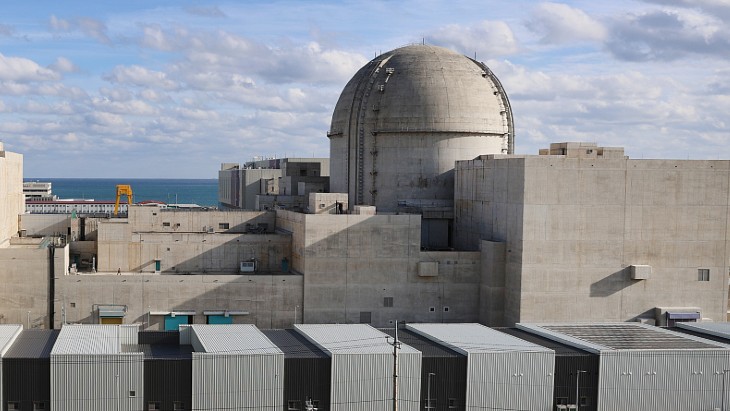Canadian regulators have agreed to issue a "licence to abandon" the Bruce Heavy Water Plant, formally marking the completion of decommissioning at the site on the shore of Lake Huron.
.jpg) |
| The Bruce Heavy Water Plant prior to dismantling (Image: OPG) |
The plant, which operated from 1973 until 1998, was built by Atomic Energy of Canada Ltd (AECL) and is located within the boundaries of the Bruce nuclear power plant, but was owned and operated by Ontario Power Generation (OPG). The Canadian Nuclear Safety Commission (CNSC) issued a licence allowing decommissioning of the plant to begin in 2004. Demolition work was completed in 2006.
OPG submitted an application to CNSC in December 2013 requesting final release of the site from CNSC regulatory control through a "licence to abandon". The regulator has now published a record of decision that it is satisfied that OPG has met the requirements for the licence to abandon to be issued, allowing the site to be used for other industrial purposes.
Heavy water is not radioactive, and radiological surveys of the site found no sources of radioactive contamination. The CNSC final decision notes, "The commission is of the opinion that the end-state radiological conditions found in the decommissioning plan have been met."
Canada's Candu pressurized heavy water reactors use unenriched, or "natural", uranium oxide fuel and heavy water as both the moderator to slow down neutrons in the reactor's core and as the reactor coolant. The Bruce Heavy Water Plant was built to supply the heavy water needed for Canada's nuclear power program. Candus are very efficient in their use of heavy water, which is recycled, meaning that the Bruce Heavy Water Plant's output was no longer needed after sufficient stockpiles were produced.
Researched and written
by World Nuclear News




_72306.jpg)


_49562.jpg)





